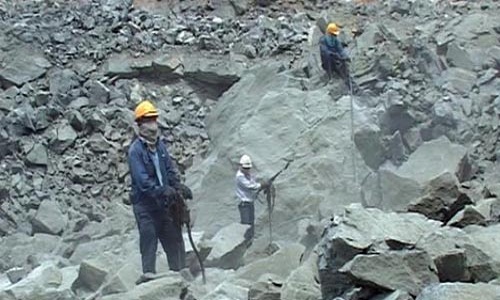7,496 total views, 2 views today
Occupational Illness Occupational illness are illness that an individual can contact at work. This means that some diseases are occupational in the sense that a healthy worker can become unhealthy due to his or her occupation. Some factors present in an occupation can expose a worker to some risks. The environment, physical factor, chemical composition, health factors and the psychological exposure to a worker can affect his or her health. Poor working conditions and lack of preventive measures are the most important causes of occupational illness. some occupation and its peculiar disease or illness are discussed below
- Veterinary Doctors
Some work or jobs expose their workers to infections which can be transferred from animals or humans. An example is the veterinary doctors or workers that deal with the treatment of animals. They stand the risk of contracting diseases if proper precautions are not taken. Contact with infected animals or the use of unsterilized equipment can pose risks to their health. Anthrax, scabies and exposure to the Ebola Virus Disease are some of these infections. Some of them can be epidemic and spread fast from the doctors to their family members which can claim the lives of thousands of people.
- Medical Health Practitioners
Health workers such as the doctors, nurses, laboratory doctors, surgeons and paramedics may contact infections and diseases in their work places. Some may lose their own lives when carrying out their duties to save lives. Diseases such as Tuberculosis, HIV/AIDS (read about HIV/AIDS here) and other communicable and blood related infections can be passed on from the patients to the health practitioners.
- High Technology and Metal Industrial Workers
Chemicals, metals, gases and the end-products of many industries can be inhaled and ingested by the industrial workers. All these are common in industries that deal with steel production, chemicals, food-processing, production of pesticides, petroleum, coals, mining among others. Coal workers, miners and those that are involved in the processing of petroleum suffer from lung diseases and respiratory infections such as breathing disorders, cough, lung cancer, nausea, dizziness, respiratory disorders, asthma, influenza and Pneumoconioses. Workers that work in metal and electric industries are prone to metal poisoning irritation, kidney damage, skin cancer, loss of memory, respiratory disorders. They are exposed to gaseous compounds, fumes, carbon monoxide, hydrogen sulphide and other gaseous products. These gaseous products results from incomplete combustion of gases and they mix with the blood’s ability to transport oxygen. Common symptoms include headache, eye irritation, fainting, respiratory disorder, tiredness, asthma and so on.
- Construction Workers
Workers that work on construction sites are prone to physical danger, stress, fall and physical injuries. The everyday use of the hand can leave a stress to the bones, muscles and tendons. Falls from buildings and heights can lead to the loss of spinal cords, broken bones, disabilities and sometimes death. There are some that are engaged in manual labour, climbing of ladder, land or house surveys are more exposed to the sun. Continuous exposure to the sun or high temperature leads to skin cancer, increase sweat rate, thirst, dehydration, heart stroke, dizziness and sometimes death. Some workers are exposed to cold temperature which can affect them negatively. Construction workers are expected to have the skills on how to escape falls. They are also expected to rest in-between work, wear protective wears and helmets and take lots of water (read on the benefits of water to human body here) and fruits to replace lost water (hydration). The health of a worker should be the first concern of an organization. Good working condition should be provided for them, faulty machines should be repaired, wastes should be disposed of properly, and work place should be well ventilated. The medical practitioners and health workers should protect themselves from health-related risks, equipments used for treatment should be sterilized, chronic and acute patients should be quarantined. If you find this article on occupational illness interesting, please like us on Facebook and Twitter, you should also share it by clicking the buttons below to enable other people benefit from it.
